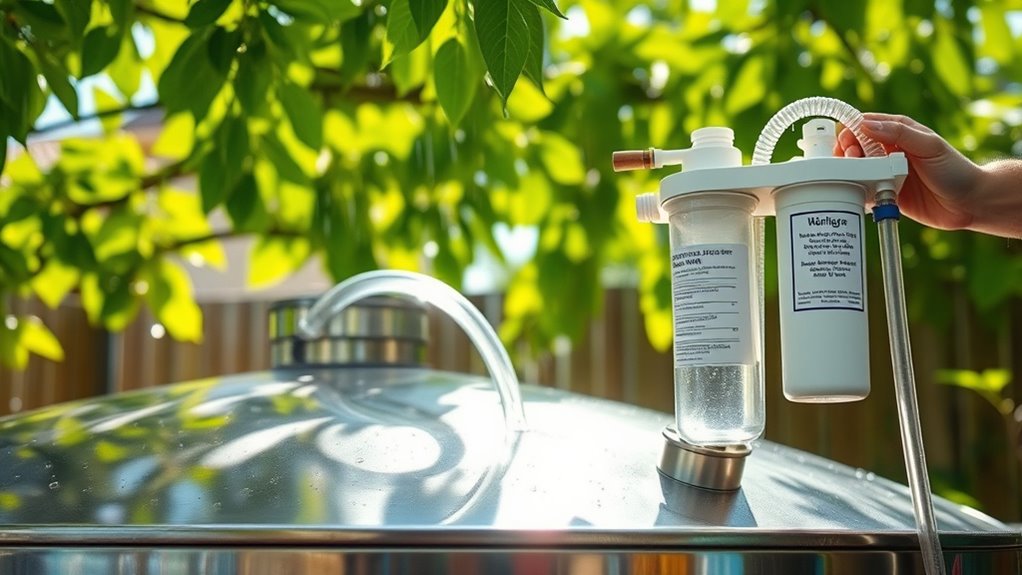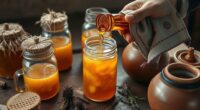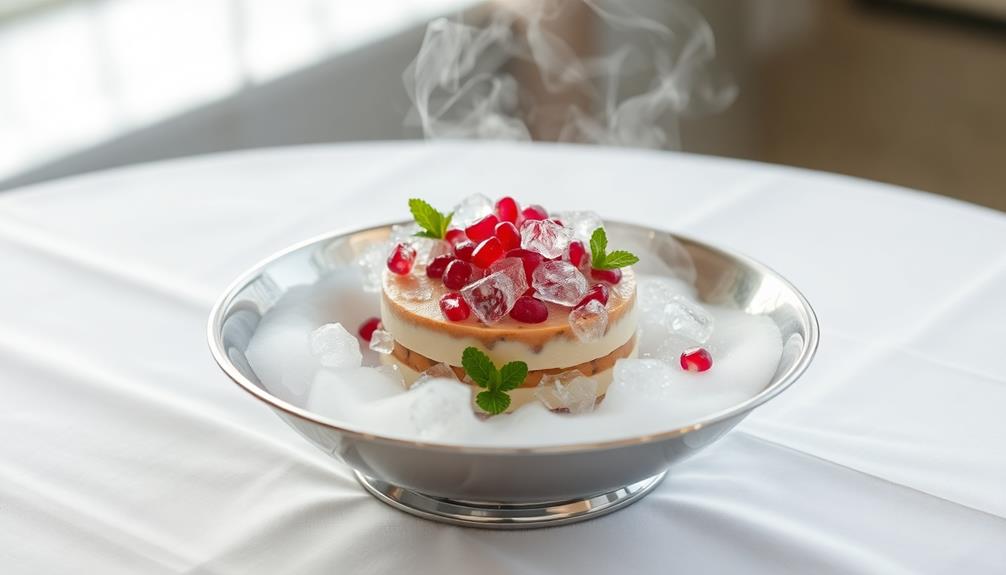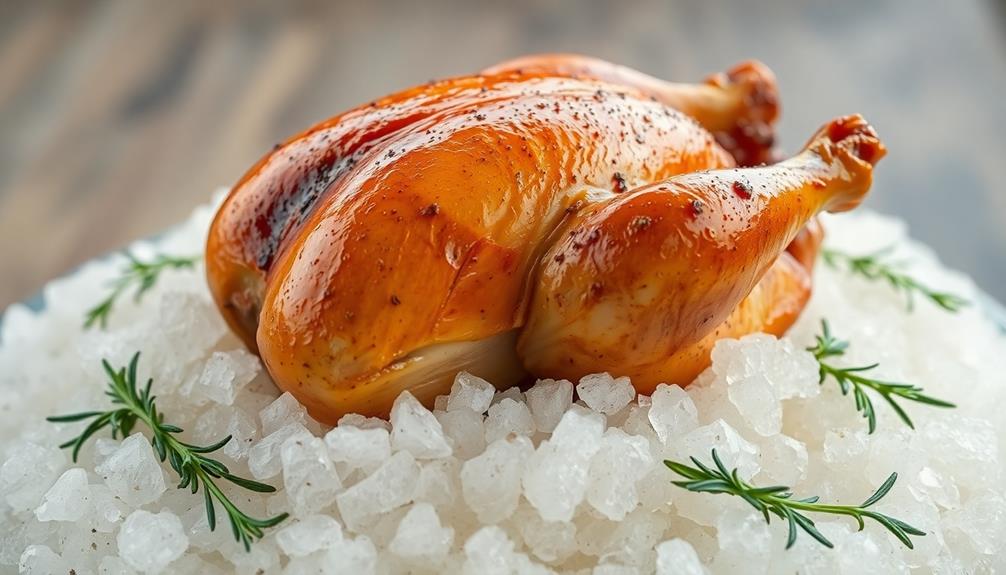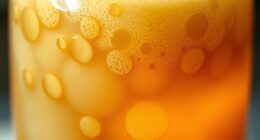To guarantee rainwater is safe for cooking, you need to follow key safety standards. Use filtration systems at collection points to remove debris, and treat water with UV sterilizers or disinfectants. Store rainwater in food-grade, opaque containers with secure lids, placed in cool, shaded areas. Regularly clean and inspect your storage setup, and install first-flush diverters to prevent pollutants from entering. Maintaining these practices helps keep your water safe—continue exploring to learn more about effective rainwater cultivation for your kitchen.
Key Takeaways
- Install filtration and disinfection systems like UV sterilizers to ensure rainwater is safe for cooking.
- Use food-grade, opaque containers with secure lids to prevent contamination and algae growth.
- Store rainwater in shaded, cool areas and regularly clean containers to maintain water quality.
- Implement first-flush diverters to divert initial contaminated runoff away from storage tanks.
- Conduct periodic water testing for bacteria, nitrates, and pH levels to confirm safety for culinary use.

Have you ever considered how rainwater harvesting can directly benefit your daily cooking routine? If you’re looking to use rainwater safely for preparing meals, understanding the importance of rainwater purification is essential. Rainwater, when collected properly, can be a clean and reliable water source, but it’s crucial to ensure it’s free from contaminants before you start cooking. The first step is to focus on rainwater purification — removing dirt, bacteria, and other impurities that can pose health risks. Installing appropriate filtration systems at the collection point helps eliminate debris and large particles. For more comprehensive purification, consider using additional treatments such as UV sterilizers or chemical disinfectants, especially if you plan to use the water regularly for cooking. Using a vetted home filtration system can enhance water safety significantly.
Proper rainwater purification ensures safe, clean water for cooking and daily use.
Another key aspect to guarantee safety is choosing the right storage container materials. Not all containers are suitable for storing rainwater intended for culinary use. You should opt for food-grade, non-toxic materials like certain plastics, stainless steel, or specific types of treated wood. Avoid containers that can leach harmful chemicals or harbor bacteria, as these can contaminate your stored water. Proper storage containers should be opaque to prevent algae growth and equipped with secure lids to keep out insects, dirt, and other pollutants. Regular cleaning of these containers is essential to prevent the buildup of mold or bacteria, which could compromise water quality. Container material plays a vital role in maintaining rainwater purity for cooking. Additionally, selecting containers with antimicrobial coatings can further inhibit bacterial growth and keep your water safer.
When it comes to storage, placement matters too. Keep your rainwater storage containers in a cool, shaded area away from direct sunlight to inhibit algae growth and reduce temperature fluctuations that may encourage bacterial proliferation. Make sure your containers are sealed tightly to avoid contamination from dust, leaves, or insects. Additionally, consider installing first-flush diverters to divert initial rainwater that may contain more pollutants away from your main storage tank. This simple step helps improve the overall quality of the water you’re storing for cooking.
Maintaining a routine of testing your rainwater periodically guarantees it remains safe for culinary use. Test for common contaminants like bacteria, nitrates, and pH levels. If you notice any issues, take corrective measures immediately, such as enhancing your purification process or replacing contaminated storage materials. By prioritizing rainwater purification and selecting appropriate storage container materials, you can confidently incorporate harvested rainwater into your cooking routine, reducing reliance on municipal supplies and making your kitchen more sustainable. Remember, safety starts with proper collection, storage, and treatment — safeguarding your health while enjoying the benefits of rainwater harvesting.
Frequently Asked Questions
How Often Should I Clean My Rainwater Collection System?
You should clean your rainwater collection system regularly to guarantee safety. Perform filter maintenance at least once every three to six months, depending on your system’s usage and environment. Additionally, do a thorough system inspection monthly to check for debris, mold, or damage. Regular cleaning helps prevent bacterial growth and keeps your water safe for cooking. Staying consistent with filter maintenance and inspections is key to maintaining a healthy rainwater system.
Can Rainwater Be Used Directly for Cooking Without Treatment?
Using rainwater directly for cooking is like walking a tightrope without a safety net—it’s risky. Rainwater purity can vary, and without proper treatment, contaminants might threaten your cooking safety. To keep your meals safe and healthy, always treat rainwater before using it in cooking. Filtering and disinfecting confirm it’s clean enough, so you can enjoy your food without worry and keep safety standards in check.
What Are the Signs of Contaminated Rainwater?
When checking for contaminated rainwater, you should look for signs like a foul water odor and discolored water. If it smells strange or has a murky appearance, it’s likely unsafe for cooking. These signs indicate the presence of bacteria or pollutants. You shouldn’t use water with a strong odor or unusual color, as it could cause health issues. Always test and treat rainwater before using it for cooking.
Are There Specific Storage Materials Recommended for Safe Rainwater?
When choosing storage containers for rainwater, prioritize safety, durability, and cleanliness. Opt for containers made from food-grade, non-toxic materials that are compatible with water to prevent leaching and contamination. Avoid containers with cracks or porous surfaces, and make certain they are opaque to block sunlight, reducing algae growth. Properly sealed storage helps keep rainwater clean, safe, and ready for cooking, so selecting the right material is essential for maintaining water quality.
How Does Climate Affect Rainwater Harvesting Safety Standards?
Climate variability and seasonal impacts directly influence rainwater harvesting safety standards. You need to adapt your setup based on changing weather patterns, as heavy rains can overwhelm storage systems, increasing contamination risks. During dry seasons, stagnant water may breed bacteria, so you should regularly clean and treat your supply. Monitoring climate trends helps you maintain safe water quality, ensuring your harvesting system stays efficient and safe year-round.
Conclusion
As you embrace rainwater harvesting for cooking, remember it’s like tending a delicate garden—you must nurture it with care and respect. By following safety standards, you turn a simple rain shower into a crystal-clear elixir, nourishing your kitchen with purity and confidence. With vigilant vigilance and mindful practices, you’ll transform each droplet into a trusted source, ensuring that your culinary journey flows as smoothly as a gentle stream—pure, safe, and endlessly life-giving.
